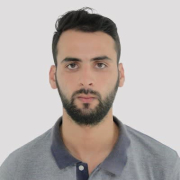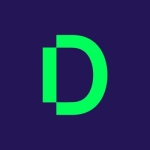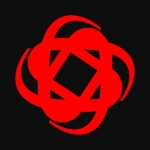This solution allowed us to provide remote access to the company's internal infrastructure in the context of the COVID-19 pandemic. It made this access more transparent and controlled for information security departments.
We easily integrated this product with our SIEM system for collecting events. Thanks to this integration, we were able to build convenient, regular reports on privileged user connections. Therefore, our information security units can better see who is connecting to the remote infrastructure.
The most valuable feature is the logging sessions with their visualization, which is video recording. This functionality allows us to restore the actions of a user in the event of any incidents.
The solution transparently integrates into the infrastructure and users do not notice it. I would give this feature the highest rating.
While the "transparent mode" feature did not affect the monitoring in any way, it led to an increase in the convenience of connecting users.
This solution visualizes RDP sessions and logs SSH sessions.
When increasing the number of users, we can rather easily add to virtual appliances processors and memory, or disks for storing records, which is more difficult to do on a hardware (physical) appliance.
We have two administrators involved in the deployment, configuration, and maintenance of this solution. During the peak of the pandemic, we had up to 3,000 users connected through the solution and able to work from home.
The virtual appliance is deployed from the delivered image without any problems. The setup takes about 15 to 20 minutes, including initial setup and configuration. It also is available to any admin user with Unix competencies.
We use the “transparent mode” function to connect administrative users via SSH to the Unix servers. We did not encounter any problems when setting up this feature, as everything was easy. The solution is well-documented and quite understandable when setting up.
It took about one or two working days to administer the solution, read the documentation and settings, and test various configuration options. It was not very difficult. For our users, there were no special nuances since the connection is transparent. They do not understand nor see that they are connecting through the One Identity Safeguard space.
Our implementation strategy was to use this solution to control remote sessions of privileged users, first with our IT support staff. Now, we use the product for this purpose. In general, the strategy was a success.
Clearly assess your needs and formulate the necessary requirements, then proceed from there with the selection of an appropriate solution. In our case, One Identity Safeguard became this solution. However, this solution is not a panacea for all ills. It is possibly you’ll find that a different solution is more suitable.
I would rate the solution as a nine (out of 10). In order to rate it as a 10, it should have what I would like to see in its coming new releases.
Foreign Language: (Russian)
Как и для чего вы используете этот продукт?
Мы используем это решение для контроля доступа привилегированных пользователей, таких как администраторы приложений, к внутренней сети. Это решение позволяет нам записывать и регистрировать пользовательские сессии.
Мы используем виртуальные устройства на платформе VMware. Виртуализация таких сервисов позволяет нам гибко масштабировать конфигурацию нашего оборудования и предоставляет значительно больше возможностей для построения стабильной структуры.
Как это помогло моей организации?
Это решение позволило нам обеспечить удаленный доступ к внутренней инфраструктуре компании в контексте пандемии COVID-19. Это сделало этот доступ более прозрачным и контролируемым для отделов информационной безопасности.
Мы легко интегрировали этот продукт с нашей системой SIEM для сбора событий. Благодаря этой интеграции мы смогли создавать подходящие регулярные отчеты о привилегированных пользовательских соединениях. Поэтому наши подразделения информационной безопасности могут лучше видеть, кто подключается к удаленной инфраструктуре.
Какие функции вы нашли наиболее ценными?
Наиболее ценной функцией является регистрация сеансов с их визуализацией, то есть запись видео. Эта функциональность позволяет нам восстанавливать действия пользователя в случае каких-либо инцидентов.
Решение прозрачно интегрируется в инфраструктуру, и пользователи этого не замечают. Я бы дал этой функции самый высокий рейтинг.
Хотя функция «прозрачного режима» никак не повлияла на мониторинг, она привела к увеличению удобства подключения пользователей.
Это решение визуализирует сеансы RDP и регистрирует сеансы SSH.
Что нуждается в улучшении?
Я хотел бы видеть поддержку RDP через HTTPS, чтобы этот продукт можно было использовать вместе с терминалом Microsoft.
Я хотел бы визуализировать сессии SSH.
Я хотел бы использовать встроенные механизмы балансировки трафика со встроенным механизмом балансировки нагрузки при использовании нескольких экземпляров.
Как долго я использую этот продукт/решение?
Около четырех лет.
Что я думаю о стабильности этого продукта/решения?
За четыре года использования мы не встретили ни одного сбоя или сбоя системы. Продукт стабилен.
Что я думаю о масштабируемости решения?
Увеличивая количество пользователей, мы можем довольно легко добавить к виртуальным устройствам процессоры и память или диски для хранения записей, что труднее сделать на аппаратном (физическом) устройстве.
У нас есть два администратора, участвующих в развертывании, настройке и обслуживании этого решения. В разгар пандемии у нас было до 3000 пользователей, подключенных через решение и способных работать из дома.
Как бы вы оценили техническую поддержку этого продукта/решения?
Мы использовали техническую поддержку One Identity. Я бы оценил это как превосходное. Они отвечают на все заданные вопросы быстро и качественно.
Какое решение я использовал ранее и почему я переключился?
Ранее мы не использовали другое решение.
Как прошла начальная настройка?
Виртуальное устройство развертывается из доставленного образа без каких-либо проблем. Настройка занимает от 15 до 20 минут, включая первоначальную установку и настройку. Он также доступен для любого администратора с компетенцией Unix.
Мы используем функцию «прозрачного режима» для подключения административных пользователей через SSH к серверам Unix. При настройке этой функции проблем не возникало, так как все было просто. Решение хорошо документировано и вполне понятно при настройке.
Потребовалось около одного или двух рабочих дней для администрирования решения, ознакомления с документацией и настройками, а также для тестирования различных вариантов конфигурации. Это было не очень сложно. Для наших пользователей особых нюансов не было, так как подключение прозрачно. Они не понимают и не видят, что они соединяются через пространство One Identity Safeguard.
Наша стратегия внедрения заключалась в том, чтобы использовать это решение для управления удаленными сеансами привилегированных пользователей, в первую очередь с нашей службой поддержки Информационных Технологий. Теперь мы используем продукт для этой цели. В целом стратегия имела успех.
Какой была была ваша прибыль на инвестиции в One Identity Safeguard?
Мы не испытали никаких потерь, поскольку контроль действий привилегированных пользователей в первую очередь сводит к минимуму риска и создает отсутствие потерь.
Какой у меня опыт работы с ценами, стоимостью установки и лицензированием?
Лицензирование и ценообразование довольно просты. Количество каналов регистрации лицензий зависит от потребностей заказчика. Я бы посоветовал оценить количество одновременных сеансов за единицу времени и перейти оттуда к покупке лицензии.
Прежде чем выбрать этот продукт, вы оценивали другие варианты?
Мы оценили Safeguard и другой продукт. В конечном итоге мы выбрали Safeguard.
Safeguard - это внешнее (по отношению к управляемым системам) решение, которое позволяет вам записывать сессии. Его конкурентом было агентское решение, которое было размещено на целевых серверах. С решением конкурента был риск отключения записи привилегированного пользователя.
Какой еще у меня совет?
Четко оцените свои потребности и сформулируйте необходимые требования, а затем приступайте к выбору подходящего решения. В нашем случае One Identity Safeguard стал таким решением. Однако это решение не является панацеей от всех болезней. Возможно, вы обнаружите, что другое решение более подходит.
Я бы оценил решение как девять (из 10). Чтобы оценить его как 10, у него должно быть то, что я хотел бы видеть в его будущих новых выпусках.

















